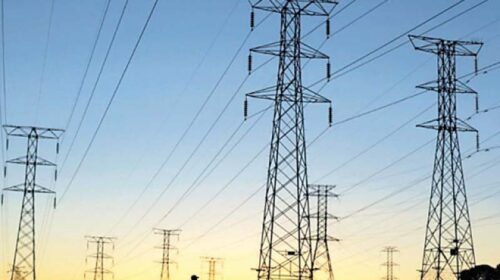The scourge of circular debt of cash bleeding power sector has gone up by Rs1,328 billion in the last 40-month rule of PTI government, climbing up to Rs2,476 billion till December 2021.https://0200f1fc14232232425dd4f5771e468d.safeframe.googlesyndication.com/safeframe/1-0-38/html/container.html
“The Circular Debt (CD) stood at Rs1,148 billion when the PTI government had assumed reins of power in August 2018. It has now gone up to Rs2,476 billion, indicating that it increased by Rs1,328 billion in the last 40 months period,” official estimates presented before the government on Thursday revealed.
It clearly demonstrates that the PTI government failed to curtail the piling up of circular debt. On an average, accumulation of debt stood at over Rs33 billion on a monthly basis in the last 40-month period.
The government has now approved the Circular Debt Management Plan (CDMP) in a bid to fulfil the conditions of IMF and World Bank loans and envisaged an ambitious target to bring it down to Rs1,890 billion till June 2022. It plans to slash it down by Rs520 billion during December-June period of FY2022.
The breakdown of circular debt shows that the payable to power producers stood at Rs1,494 billion, GENCOs payable to fuel suppliers Rs79 billion and amount parked in Power Holding Limited (PHL) Rs904 billion, so the total amount on account of whole Circular Debt had climbed to Rs2,476 billion till December 2021. The government made tall claims that it curtailed the circular debt and brought it down to Rs22 billion in pre-Covid-19 scenario but the outbreak of coronavirus derailed the curtailment programme.
There was only Rs196 billion surge in circular debt till December 2021 compared to the same month of the last fiscal year (November 2020).
There has been a gap of Rs357 billion in the shape of unpaid subsidies of Rs8 billion, un-budgeted subsidies of Rs17 billion, IPPs interest charges on delayed payments Rs67 billion, PHL mark-up Rs11 billion, pending generation cost through quarterly adjustment and fuel adjustment Rs100 billion, non-payment by K-Electric Rs67 billion, DISCOs’ losses inefficiency Rs46 billion, DISCOs under recoveries Rs66 billion and other adjustments Rs8 billion till December 2021.
Out of the total gap of Rs357 billion, the government paid Rs161 billion through available fiscal space but there is net addition of Rs196 billion in the first six months of the current fiscal year 2021-22.
The un-budgeted subsidy, including AJK and KE, stood at Rs75 billion. There is an outstanding receivable of Rs292 billion from KE because of lingering subsidy dispute between the KE and the Government of Pakistan.
According to an official statement issued after the Cabinet Committee on Energy (CCOE) meeting held under Chairmanship of Minister for Planning Asad Umar, the CCOE has approved the revised Circular Debt Management Plan (CDMP). The three-year plan targets to minimize the annual build-up of Circular Debt as well as reduction in the stock. The approval came during a CCOE meeting held on Thursday under the chairmanship of Federal Minister for Planning, Development, and Special Initiatives Asad Umar. The meeting was attended by Minister for Finance, Minister for Energy, Minister for Industries and officials of the ministries.
During the meeting, the CCOE reviewed the current situation and projections of the power sector circular debt while approving the CDMP. The committee also noted the monthly report of merit order violations in the power plants dispatch due to transmission constraints and other technical reasons. Similarly, the committee also noted the implementation status of Master Agreements and PPA Amendments with the IPPs.
Furthermore, the CCOE also approved recommendation of introducing a special tariff category for Urban Mass Transit projects in the Schedule of Tariff. The tariff will be applicable to Karachi Circular Railway and other urban mass transit projects.





